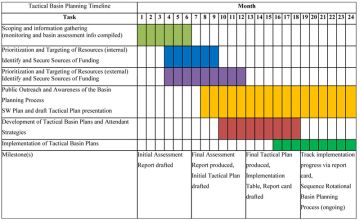Core Vs. Non-Core Business Activities: The Must-Know Differences

A business owner needs to understand the difference between core and non-core activities to focus on the most productive items on their task list. The core activities are the ones that make money and help the company grow. Non-core activities are not as high in priority, but they still might be necessary for the company. Here are a few other key differences to help you delegate within your organization.
Profits and losses are relevant for core activities, while they’re not for non-core activities
One big difference between core and non-core business activities is the impact on profits or losses. If an activity generates more profit than all of your expenses combined, then it’s a core business activity. On the other hand, if it generates less profit than any of your costs, then it’s probably not crucial to what you do. It might make sense to keep doing it for other reasons, but profits aren’t enough reason alone.
Non-core activities generate little or no profit. Usually, these functions break even with expenses or cost money. For example, mailbox management is a non-core business activity worth delegating, as it’s not growing your profit margins. Home-based small business owners and entrepreneurs looking to automate their mail management should invest in a virtual mailbox such as this one. That way, you and your team can focus your attention on helping the business thrive in other areas.
Core activities help you grow your business
Another way to tell if an activity is a core or non-core is whether it helps your business grow somehow.
For example, many businesses do promotions to increase revenue and awareness of their product or service. This marketing is a core activity because it helps the business grow, which impacts profits.
On the other hand, many small tasks don’t help your business grow. For example, changing an entry in Google Maps to prevent people from getting lost when visiting your shop might be necessary if people struggle to find your location or if it’s a safety issue. However, changing the address of your shop doesn’t necessarily help you operate in the black, making it a non-core task. Non-core doesn’t mean frivolous or unnecessary, but it won’t help increase the bottom line.
Core business activities require strategic planning to maintain profits and growth
Strategic planning is essential for core business activities. This process involves setting long-term and short-term goals for your company. Then you can use those to measure whether an action is a core or non-core and assess the actual activity itself.
For example, hiring new employees requires strategic planning because you need to ensure they’ll help increase profits and grow the company. The activity in itself isn’t a core or non-core activity, but it becomes one if you set a goal to hire more employees.
Non-core activities don’t require strategic planning because they usually don’t impact profits and growth. For example, going for a walk at lunchtime doesn’t need long-term or short-term planning. The activity itself isn’t a core or non-core business activity–it’s just a small task you can do to recharge your focus during the day.

Core activities are worth the investment
Investment is another way to distinguish between core and non-core business activities. An activity may or may not cost money, but if it’s worth investing for long-term gains, then it’s a core activity.
For example, using social media like Facebook and Twitter to promote your business is crucial because it helps you expand your customer base. Of course, it might take some time before you see a return on that investment, but social media marketing is still a core activity because it can increase your profits down the line.
Many non-core activities don’t require any investment, like taking out the trash, making coffee in the office kitchen, or drinking water. These are just small tasks that have minimal impact on profits, and an investment in these tasks won’t return in revenue.
Core business activities should be monitored
For core business activities, it’s essential to monitor them regularly. This vigilance might mean checking progress reports every week or month or looking for trends in a particular industry to see how your company measures up to the competition.
Monitoring non-core activities is optional, which means you can just let them take their course. For example, if your company uses Google Analytics to track the number of visitors on your website over time, it’s a core activity because it helps the business grow. On the other hand, if you don’t use any tracking software and never check how many visitors you have or what they do on your site, it’s a non-core activity because you don’t need to monitor it.
Core business activities are inherent to the company
Another way to differentiate between core and non-core business activities is whether they’re inherent to your company or not. If an action is just as much tied to your business as breathing air, then it’s a core activity. Things like developing new product lines, creating a marketing strategy, and planning to open up a new location are all examples of inherent activities that the company can’t function without.
Outsourcing non-core business activities is another way to ensure they reach completion but don’t affect your company’s growth and development. This task delegation means hiring someone outside the company, like an employee or contract worker specializing in this particular task.
Wrap up
While core and non-core business activities look different on the surface, they both have a common denominator: they’re either worth investing in or not based on how much revenue you’ll get back. So if something is worth investing in, then it’s a core activity, and if it’s not then, it’s considered non-core, even if there are costs associated with it.










